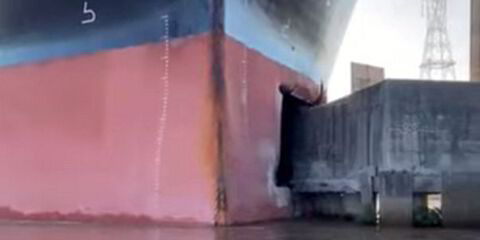Shipowners are increasingly turning to spot LNG bunkering deals for dual-fuel ships in a volatile market, according to Integr8 Fuels.
The Navig8 Group-backed fuel supply company said its LNG desk has recently traded several stems as price fluctuations encourage buyers to seek prompt supplies to manage their risk.
Integr8 explained that when strike action was announced by workers at two Chevron LNG plants in Australia last month, it sent shockwaves through the LNG market.
Although these plants primarily produce LNG for exports to Asian markets, the impact on prices was global, and Europe’s Title Transfer Facility pricing benchmark in the Netherlands surged on the news.
“The market feared global supply disruptions in an interconnected LNG supply chain. And this shows just how sensitive the global supply-demand balance has been to supply disruptions after Russia invaded Ukraine,” the company said.
Integr8 argues that volatile LNG prices are here to stay for the time being but are expected to come down and stabilise at a lower level after 2025.
Business manager Jonathan Gaylor said: “We forget that before Russia’s war with Ukraine, LNG prices were competitive against conventional marine fuels and rather stable.”
Gas was priced below €500 ($528) per tonne in Rotterdam’s bunker market until December 2021.
When Russia invaded Ukraine in late February 2022, prices rose rapidly to new highs. A year later, the price had quintupled and peaked at more than €2,500 per tonne.
This discouraged owners from using LNG for dual-fuel vessels, and there was widespread gas-to-oil switching.
Prices drop sharply
But Rotterdam’s LNG price has since come off sharply, dipping below low sulphur marine gasoil and at parity with very low sulphur fuel oil.
“Buyers have subsequently readjusted to take advantage of the renewed pricing opportunities, and oil-to-gas switching has become more prevalent again,” Integr8 said.
The changes in LNG and fuel oil prices put shipowners off signing up for term bunker deals, it added.
Container vessels used to make up the vast majority of vessels bunkering LNG.
“We have recently seen more dual-fuel tramp vessels bunkering. These typically require greater flexibility in timing and location, especially for tankers,” Gaylor said.
Oil and chemical tankers now make up the biggest LNG-capable vessel type, with 116 in operation and 85 on order, according to DNV data.
Price references vary between suppliers and geographies.
Partial ceiling on prices
It is common to link LNG stem pricing to established wholesale oil and gas benchmarks such as TTF, JKM (Japan/Korea marker), Henry Hub and Brent to cover some exposure to price swings, Integr8 said.
There are longer-term Brent or fuel oil price-linkage options for LNG, but they will typically come at a premium for buyers.
“By locking in the delta on a linked price of a certain percentage, LNG prices will have a partial ceiling based on conventional fuels, and buyers can pay down the premiums they paid for investments in dual-fuel engines,” the company said.
It expects the rate of payback on dual-fuel vessels to pick up after 2026 as global LNG supply is boosted by huge new volumes from Qatar and the US.
LNG stems still require a longer time to fix and deliver than conventional ones.
One potential choke point is a lack of specialist bunkering vessels, the supplier argues.
The global LNG-fuelled fleet is projected to grow faster than the LNG bunker vessel fleet is expanding.
“This could lead to an undersupply of bunker vessels in 2025/2026 when bunker demand is on track to rise above supply capacity and LNG prices become competitive. It could pose challenges to tramp trading vessels looking for timely LNG spot bunker deliveries,” Integr8 said.





